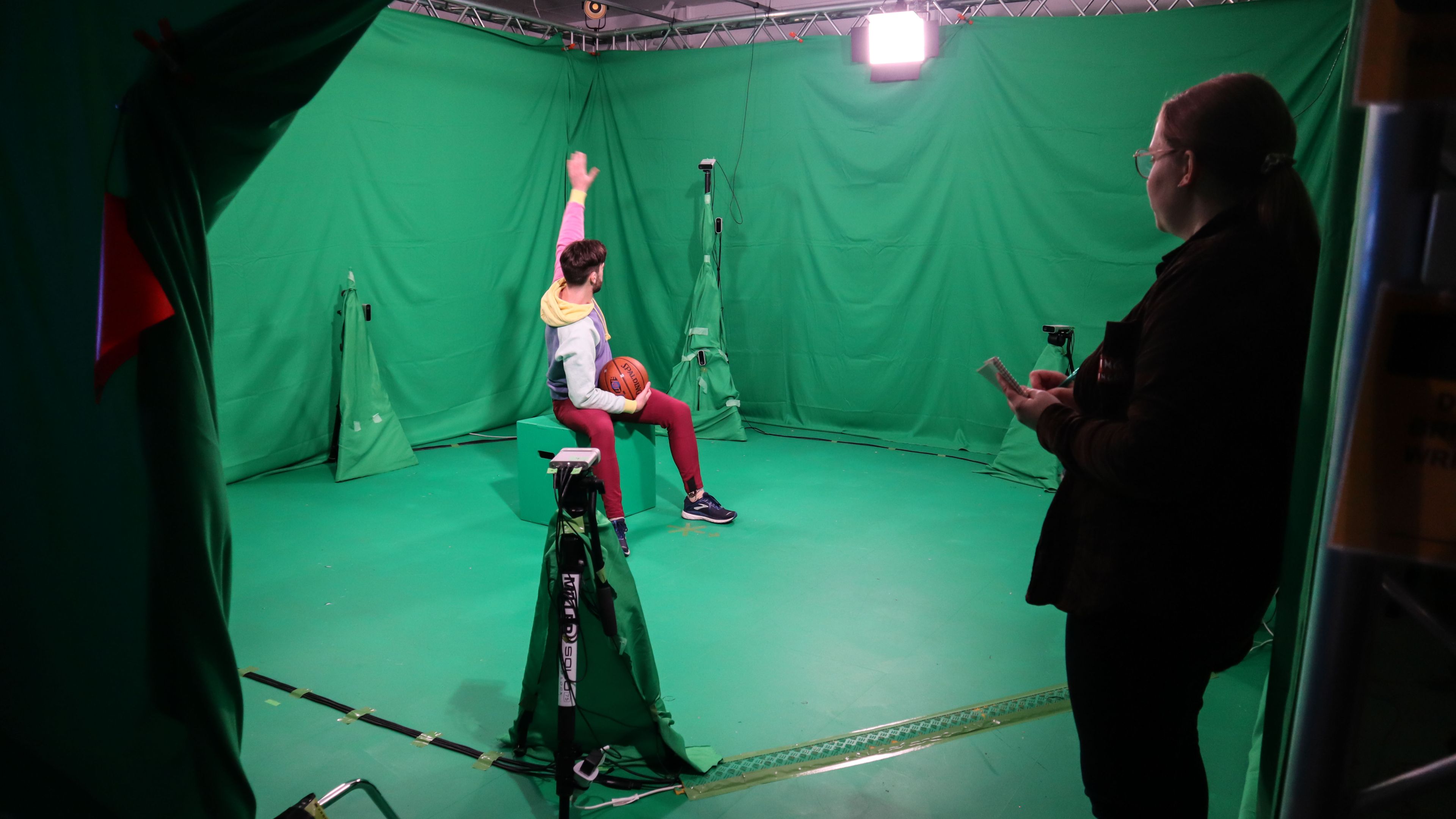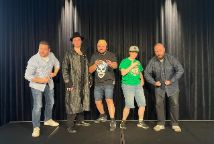Motion and volumetric capture animation tech breaks barriers

A performer tests out CTMT’s motion capture equipment, which uses sensors to upload information about isolated movements from the body performing them
In summary
- Swinburne’s Centre for Transformative Media Technologies (CTMT) is broadening possibilities for creators with cutting edge animation technology
- Motion and volumetric capture relies on cameras and sensors to digitise human movement
- Situated at CTMT’s bespoke Embodied Movement Design Studio in Prahran, the technology has already been utilised in a range of projects, from art to medicine
The possibilities have been broadened for creators in a variety of fields with cutting-edge animation technology at Swinburne University of Technology’s Centre for Transformative Media Technologies (CTMT).
Motion and volumetric capture relies on cameras and sensors to digitise human movement.
Still a niche application to date, motion capture is commonly used in video game development and seen in behind-the-scenes footage of big budget Hollywood movies – think body suits with small, white balls attached.
But CTMT is working to change that and make it more accessible to everyone from artists to biotech developers.
Creative Developer Haydon Bakker is part of the CTMT team who run the bespoke Embodied Movement Design Studio.
“Our motion capture floor is very large and accurate, so you can get really good data that requires a lot less cleaning, and there’s more space to move so you can have larger choreography,” Haydon said.
“We have high-end computers running the system, as well. Volumetric capture is still a developing technology and is very resource intensive.
"We have a loud, heavy and expensive computer at the back, gathering gigabytes of data in seconds, which allows us to create outputs that not a lot of people have available to them at the moment.”
Tools and tricks of the trade
In the competitive digital age, volumetric and motion capture can provide an edge for products, services, marketing and more.
Volumetric capture uses cameras to upload a 360-degree perspective of a movement or series of movements. Once the uploaded data is analysed by a specialised computer, it provides a three-dimensional, digital representation of the person as they appeared to the camera.
Motion capture uses sensors (like those small, white balls in the Hollywood behind-the-scenes footage) to upload information about isolated movements from the body performing them. When a special computer analyses the data, it can construct ‘skeletal’ movements which could be applied to pre-constructed digital bodies, like cartoon or computer-animated characters.

CTMT’s volumetric capture technology uses cameras to digitise a 360-degree perspective of a movement or series of movements
Collaborating across fields
CTMT’s studio has already been utilised in a range of projects, highlighting its broad application in a variety of fields.
“Motion capture is very useful for bio-mechanics, and we’re using volumetric at the moment for medical technology research,” Haydon said.
“We have also utilised it in virtual reality, and there are a lot of people doing that as well because the idea of getting a realistic digital person without falling into the uncanny valley is something that can be very effort intensive, but with this technology we can capture a person and display them digitally in a way that is undeniably them."
Part of CTMT’s work to widen its application is improving education and awareness.
A two-day workshop held on 29 and 30 October 2022 was attended by students, video game developers, artists and business owners.
CTMT experts showcased the equipment, their studio, and how the technology works. They discussed how it might help various workshop attendees, many of whom they hope to collaborate with in the future.
“We really want to work with different individuals and groups and get them excited about this,” Haydon said.
“We want to see this technology spread more and see more people using it. When there’s more work in the field, the field gets better, so we want to encourage that cycle of growth.”
Interested?
If you have a project and want to know how motion and volumetric capture technology could enhance it, get in touch with the team at CTMT.
-
Media Enquiries
Related articles
-

- Technology
- Science
- Engineering
Victorian students drive green energy transition through international hydrogen competition
Swinburne’s KIOSC, in collaboration with Horizon Educational and Gippsland Tech School, co-hosted the Hydrogen Grand Prix in Melbourne.Friday 26 July 2024 -

- Student News
- Film and television
Swinburne students curate "Wrestling with Reality" film season for ACMI's Cinema 3
Students from Swinburne's Cinema and Screen Studies program launch curated film season on ACMI’s streaming platform, Cinema 3.Tuesday 23 July 2024 -

- Technology
- Health
New MedTechVic prototypes to transform everyday lives of people with a disability
Swinburne’s MedTechVic has revealed three new prototypes designed through the joint Health-led Manufacturing Innovation Program, in partnership with the Australian Medtech Manufacturing Centre and Safer Care Victoria
Friday 19 July 2024

